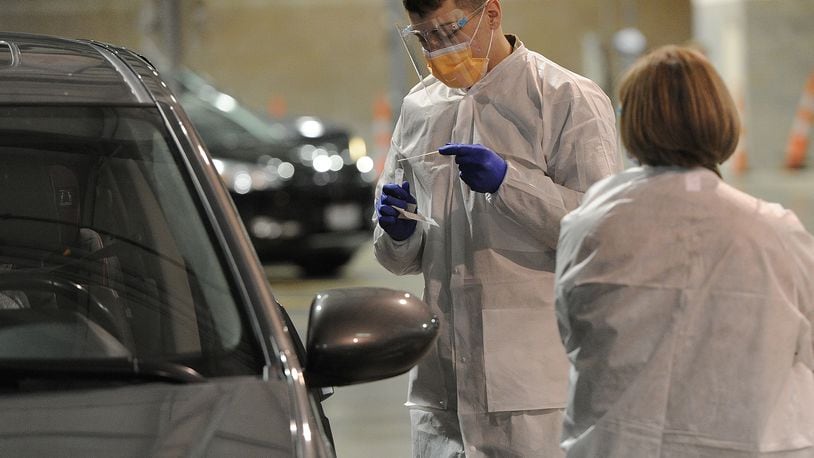“Overall, I do not foresee an immediate or dramatic change in the Ohio Department of Health’s ability to serve as a resource as a result in this shift,” he said.
He noted the end of the health emergency will move COVID treatment, testing and vaccines to more traditional health care coverage and that some people could see more out-of-pocket costs for care.
The federal government will no longer ship free COVID-19 tests to residents, and some health insurers may not cover the cost of over-the-counter test or tests performed by health care providers, Vanderhoff said.
However, Ohio has a supply of coronavirus tests that it will continue to provide to community partners for free. People on Medicaid will continue to be able to get tests and COVID therapeutics for free through September 2024, he added.
Some people could also see out-of-pocket charges for COVID treatments, depending on their provider and insurance.
Vanderhoff noted the state has a supply of COVID vaccines and treatments that it will continue to provide to health partners as needed.
The end of health emergency will also change how the virus is reported.
The Centers for Disease Control and Prevention will no longer compile its community transmission models, which will result in Ohio consolidating some of its COVID dashboards.
The state will still continue to track coronavirus cases, hospitalizations and deaths, Vanderhoff said.
COVID remains a reportable disease, but the 24-hour reporting time period has been extended, he added.
Vanderhoff stressed the end of the public health emergency does not mean it’s the end of coronavirus as a threat. People should continue to stay up to date on COVID vaccines and stay home if they feel sick.
“This does not mean COVID-19 is over and no longer a concern,” he said.
Dr. David Margolius, director of the Cleveland Department of Public Health, noted wastewater surveillance will continue, which will help alert health officials of any potential future COVID surges.
Vanderhoff added some of the lessons and practices created during the pandemic will stay in place.
He cited being able to gather and post data in an accessible way as allowing the state to keep Ohioans informed while stay transparent. The state and local health care providers are also able to coordinate in a more efficient manner.
The hospital zone system kept the state organized and work with health partners to address issues rapidly.
“We are not dismantling our public health response capabilities or resources,” Vanderhoff said. “We’re simply evolving them as the nature of this pandemic itself is evolving.”
He noted that COVID cases, hospitalizations and deaths have been decreasing in Ohio and that the state is at some of its lowest levels since the pandemic began.
As of Thursday, ODH is reporting the following COVID data:
COVID cases:
- Total: 3,445,294
- Last week: 3,836
- Three-week average: 3,312
COVID hospitalizations:
- Total: 140,611
- Last week: 138
- Three-week average: 181
COVID ICU admissions:
- Total: 15,231
- Last week: 19
- Three-week average: 15
COVID Deaths
- Total: 42,239
- Last week: 26
- Three-week average: 38
Approximately 64.89% of Ohioans started the primary COVID vaccine and 60.19% had finished it as of Thursday. ODH reported 15.97% of residents have received the updated vaccine dose.
Those interested in getting vaccinated can visit https://gettheshot.coronavirus.ohio.gov/ to find a provider or schedule an appointment.
Vaccines also are available by appointment from each county’s local health department, and vaccine providers are listed on Ohio’s coronavirus dashboard.
About the Author
